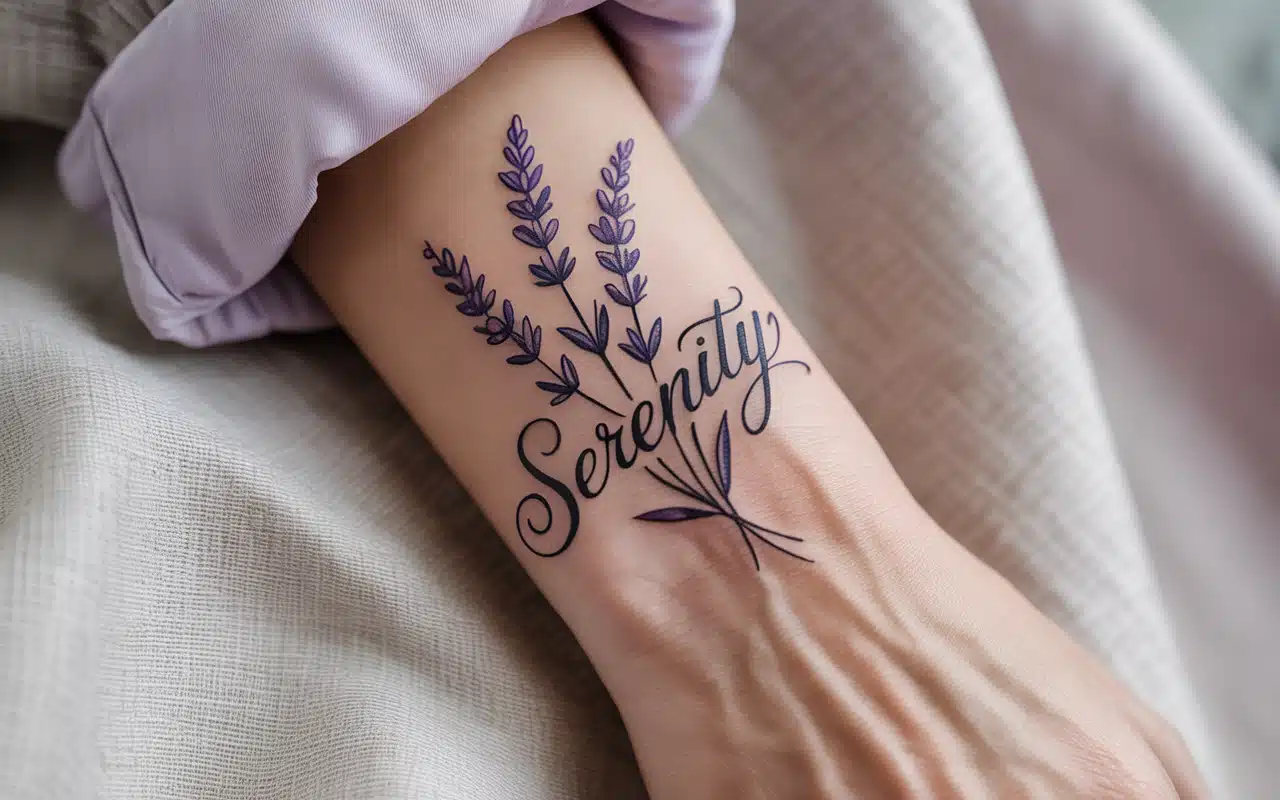Lavender tattoos have quietly bloomed into one of the most sought-after floral designs in modern body art. These delicate purple sprigs carry meanings that run deeper than their simple appearance suggests. From ancient folklore to contemporary symbolism, lavender ink tells stories that resonate with people across all walks of life.
The choice to get a lavender tattoo isn’t just about aesthetics – though they’re undeniably beautiful. Each tiny flower cluster holds significance that speaks to the human experience in profound ways. Whether you’re drawn to their calming energy or their representation of devotion, these tattoos offer layers of meaning worth exploring.
1. Serenity and Calm




Lavender’s most recognized meaning centers around tranquility and peace. The herb itself has been used for centuries to promote relaxation and reduce anxiety. When translated into tattoo form, these purple blooms become a permanent reminder to find calm in life’s storms.
People often choose lavender tattoos during transitional periods in their lives. Maybe they’ve overcome a particularly stressful chapter or they’re seeking to embody more peaceful energy moving forward. The visual alone can trigger feelings of serenity – much like catching a whiff of actual lavender in a garden.
Mental health advocates have embraced lavender tattoos as symbols of their journey toward wellness. The design serves as both personal affirmation and conversation starter about the importance of self-care. It’s remarkable how something so simple can carry such therapeutic weight.
2. Devotion and Loyalty
In Victorian flower language, lavender represented devotion that transcends time. This meaning has carried forward into contemporary tattoo culture, where couples often choose matching lavender designs to symbolize their commitment. The flower’s ability to retain its fragrance even when dried makes it a perfect metaphor for lasting love.

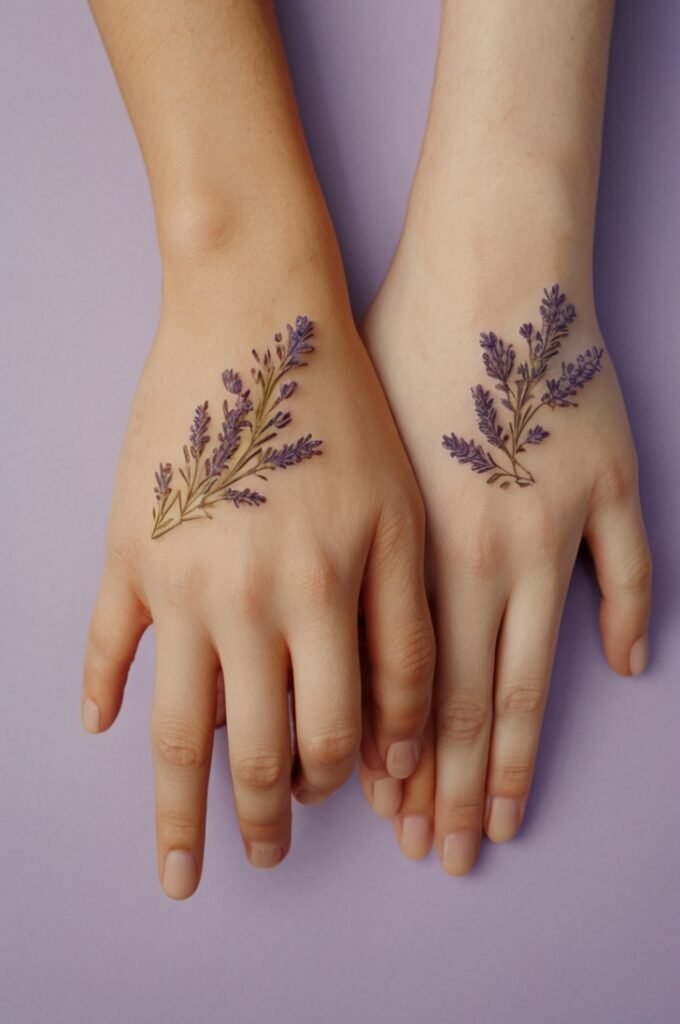
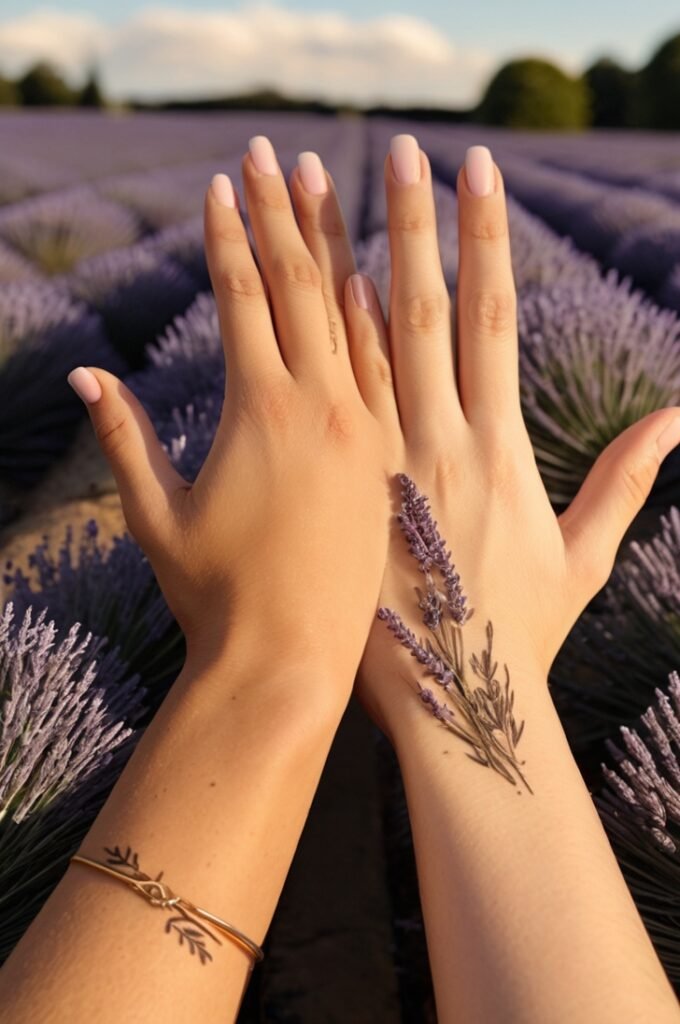
Some people get lavender tattoos to honor long-term friendships or family bonds. The design becomes a visual pledge of loyalty that goes beyond romantic relationships. There’s something deeply moving about wearing a symbol of unwavering devotion on your skin.
Religious individuals sometimes incorporate lavender into spiritual tattoos, representing their devotion to their faith. The purple hues connect to themes of spirituality and higher consciousness found in many belief systems.
3. Purity and Innocence






Lavender’s association with cleanliness and purification dates back to ancient Roman baths. This connection to purity has evolved into modern tattoo symbolism, particularly for those seeking fresh starts or spiritual cleansing. The flower represents the desire to approach life with clear intentions.
Many people choose lavender tattoos after overcoming addiction or breaking free from toxic patterns. The design marks a commitment to maintaining purity in their thoughts, actions, and relationships. It is a visual reminder that they’ve washed away their past mistakes.
Brides sometimes incorporate lavender into wedding-related tattoos, symbolizing the purity of their union. The delicate flowers complement other bridal imagery while adding layers of meaningful symbolism to the design.
4. Feminine Grace and Elegance

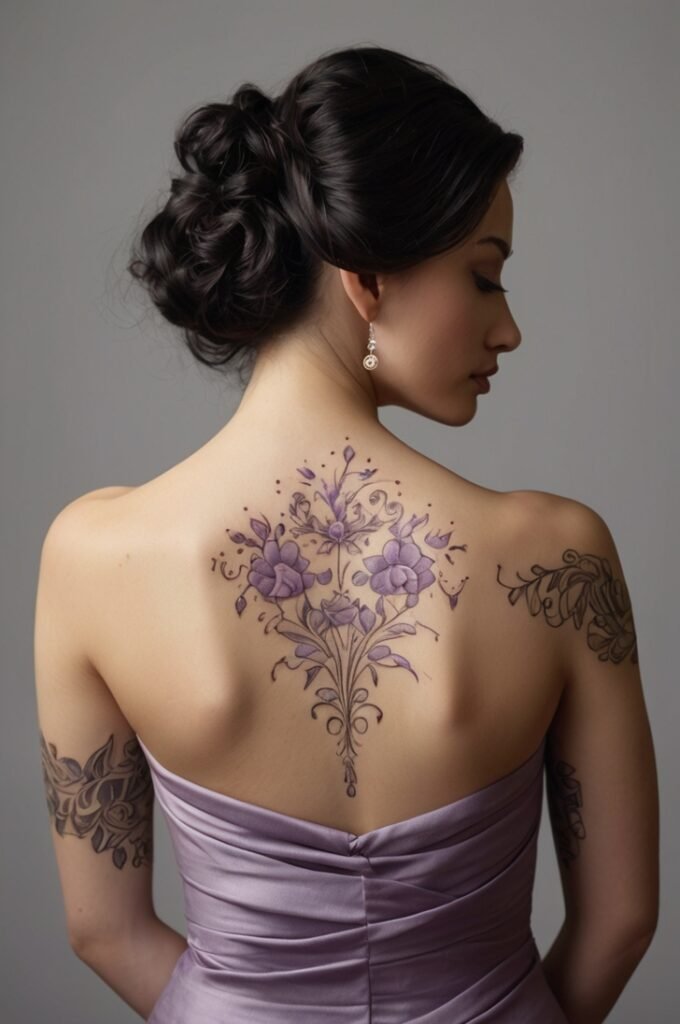


There’s an undeniable femininity to lavender tattoos that appeals to many women. The soft purple tones and delicate flower structure embody classical notions of grace and refinement. These tattoos celebrate the gentler aspects of feminine energy without appearing weak or fragile.
Fashion-conscious individuals often choose lavender designs for their aesthetic versatility. The muted purple tones complement various clothing styles and skin tones beautifully. Unlike bold, attention-grabbing tattoos, lavender designs whisper rather than shout.
Some feminists have reclaimed lavender tattoos as symbols of strength through softness. They reject the notion that feminine traits are somehow lesser, instead celebrating the power found in gentleness and nurturing energy.
5. Protection and Warding Off Negativity
Historical folklore credited lavender with protective properties against evil spirits and negative energy. Modern tattoo enthusiasts have adopted this belief, viewing their lavender ink as spiritual armor. The design serves as a talisman that repels toxic influences from their lives.

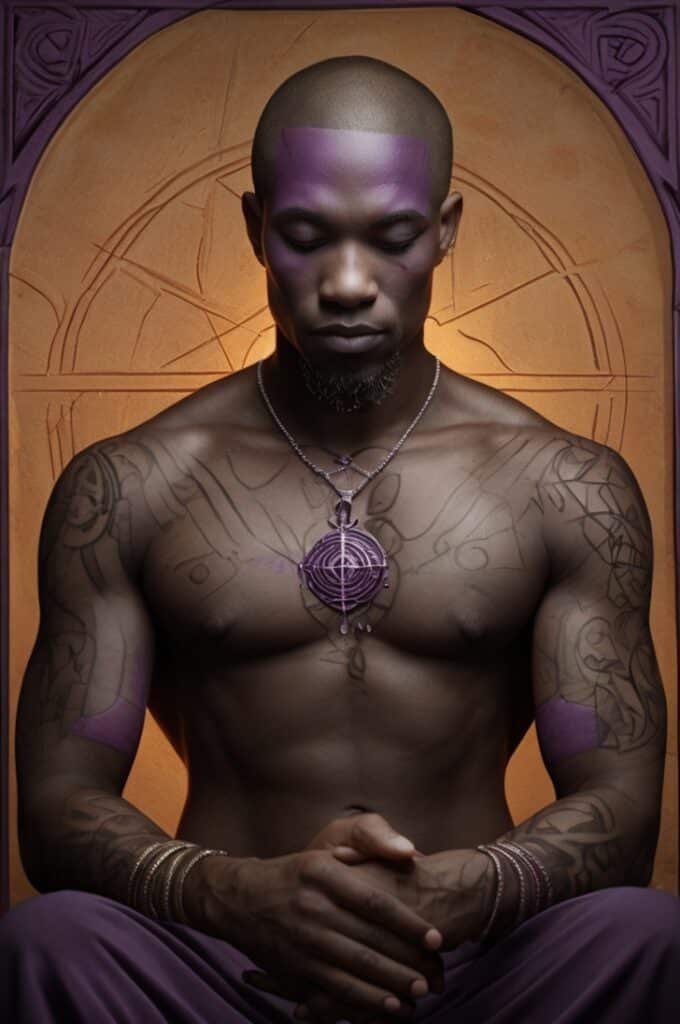

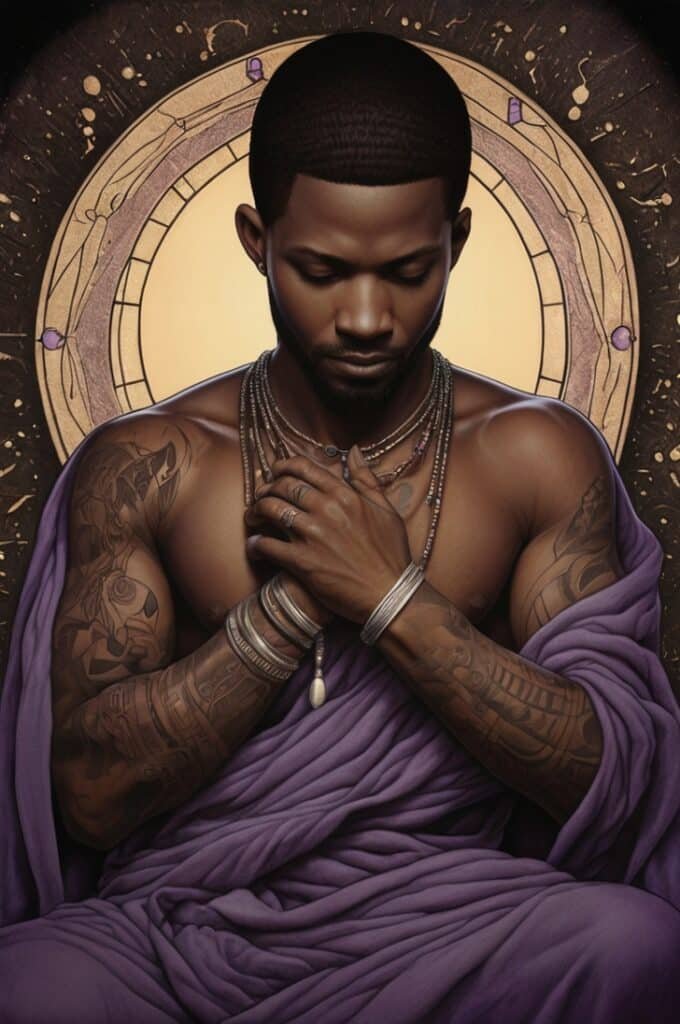

Energy healers and those interested in metaphysical practices often incorporate lavender into larger protective tattoo pieces. Combined with other symbols like crystals or sacred geometry, the lavender amplifies the overall protective intention. It’s fascinating how ancient beliefs continue to influence contemporary tattoo choices.
Parents sometimes get lavender tattoos to symbolically protect their children. The design represents their wish to shield their loved ones from harm while promoting peaceful energy in their family environment.
6. Healing and Recovery
The medicinal properties of lavender have been recognized across cultures for millennia. In tattoo form, these purple blooms represent the healing journey – both physical and emotional. Many people choose lavender designs to mark significant recovery milestones or to remind themselves of their resilience.






Cancer survivors particularly resonate with lavender tattoo symbolism. The flower’s association with healing and restoration makes it a meaningful choice for those who’ve battled serious illness. Some incorporate lavender into memorial tattoos for loved ones who’ve passed from disease.
Mental health recovery is another area where lavender tattoos hold special significance. The design acknowledges the ongoing process of healing while celebrating the progress already made. It’s a gentle reminder that recovery isn’t linear – there are seasons of growth and dormancy, just like actual lavender plants.
7. Remembrance and Memory
Lavender’s long-lasting fragrance has connected it to memory and remembrance throughout history. Memorial tattoos featuring lavender honor deceased loved ones while celebrating the enduring nature of cherished memories. The flower suggests that love persists even after physical presence fades.

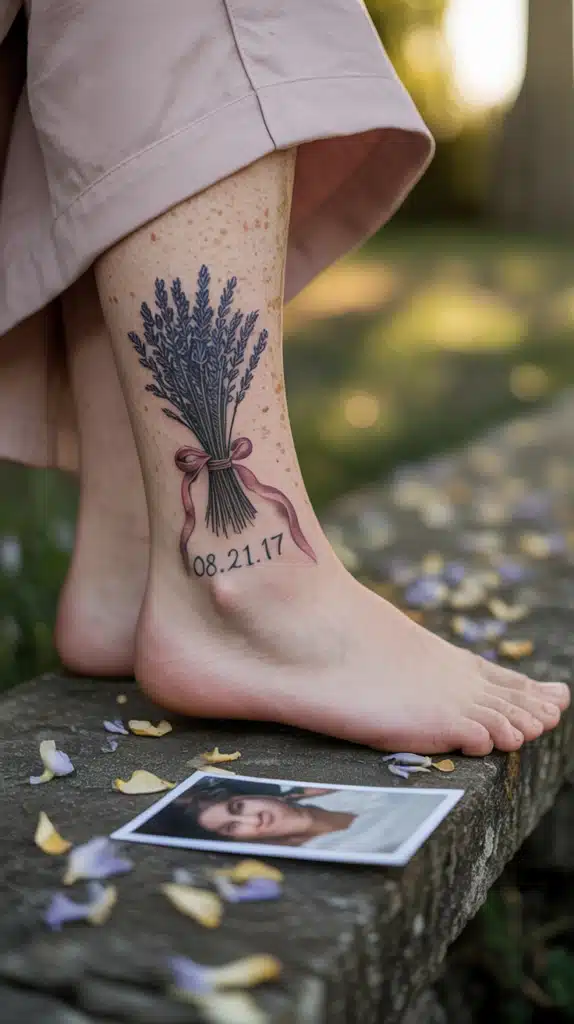

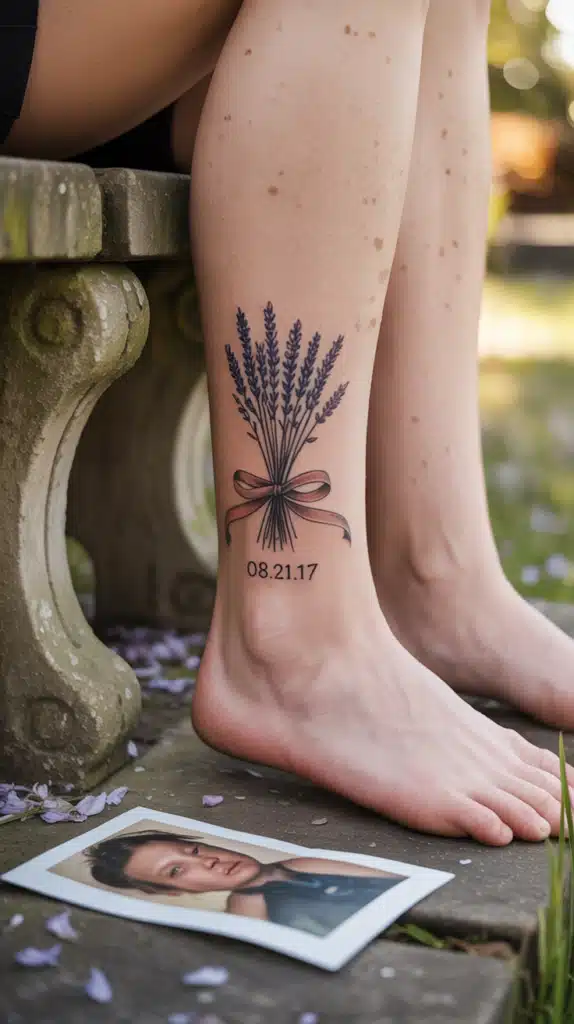
These commemorative designs often include dates, names, or personal symbols alongside the lavender. The combination creates a unique tribute that captures both the beauty of the relationship and the peace found in acceptance. Grief counselors sometimes recommend symbolic tattoos as healthy expressions of loss.
Alzheimer’s families have adopted lavender as a symbol of remembrance for those battling memory loss. The tattoo becomes a promise to hold onto precious memories when the person themselves can no longer access them.
8. Growth and Transformation
Lavender plants are remarkably resilient, thriving in harsh conditions and returning stronger each season. This quality has made lavender tattoos popular among those celebrating personal growth and transformation. The design acknowledges that beauty can emerge from difficult circumstances.


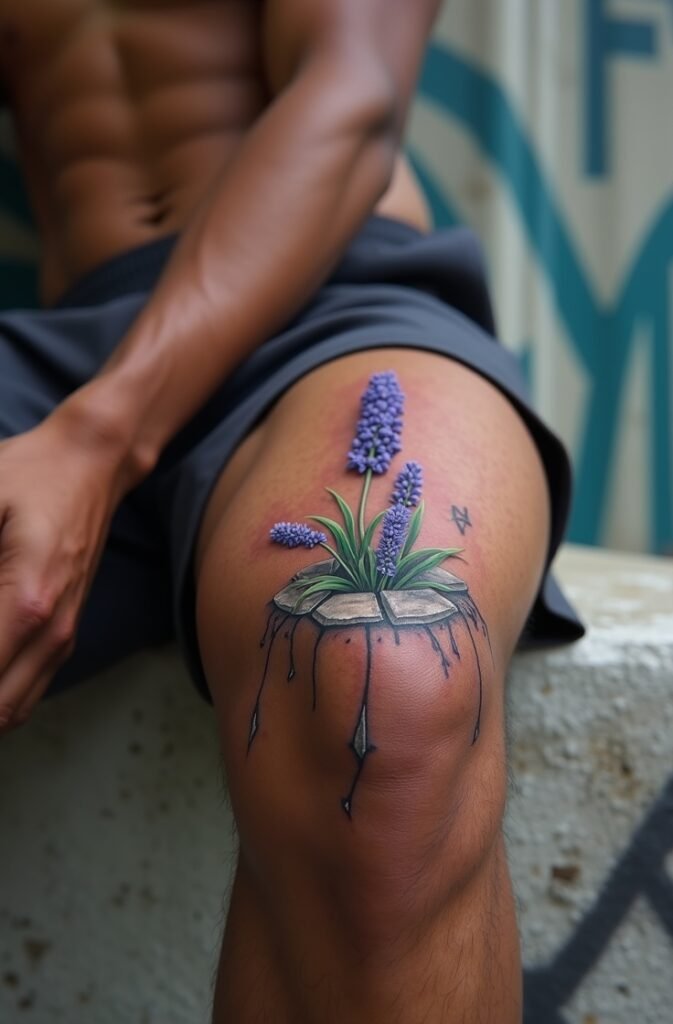
Life coaches and motivational speakers sometimes sport lavender tattoos as symbols of their own transformation journeys. The flower represents their commitment to continued growth and their belief in others’ potential for positive change. It’s a living reminder that setbacks are temporary.
Addiction recovery programs have embraced lavender symbolism for its representation of positive transformation. The flower shows that with proper care and attention, even the most damaged individuals can bloom again.
9. Gratitude and Appreciation
The simple beauty of lavender teaches us to find joy in life’s quieter moments. Lavender tattoos can represent a commitment to practicing gratitude and appreciating everyday blessings. This meaning resonates particularly with mindfulness practitioners and those recovering from depression.
Some people get lavender tattoos to mark periods of abundance in their lives. Rather than waiting for major milestones, they celebrate the small victories and daily gifts that often go unnoticed. The design serves as a permanent reminder to maintain an attitude of appreciation.
Gratitude journals and lavender tattoos share similar therapeutic benefits. Both practices encourage individuals to focus on positive aspects of their experience rather than dwelling on problems or disappointments.
10. Connection to Nature and Simplicity
In our increasingly digital world, lavender tattoos represent a longing for simpler times and deeper connections with nature. The design celebrates the beauty found in uncomplicated things – sunshine, fresh air, and wildflowers swaying in gentle breezes.
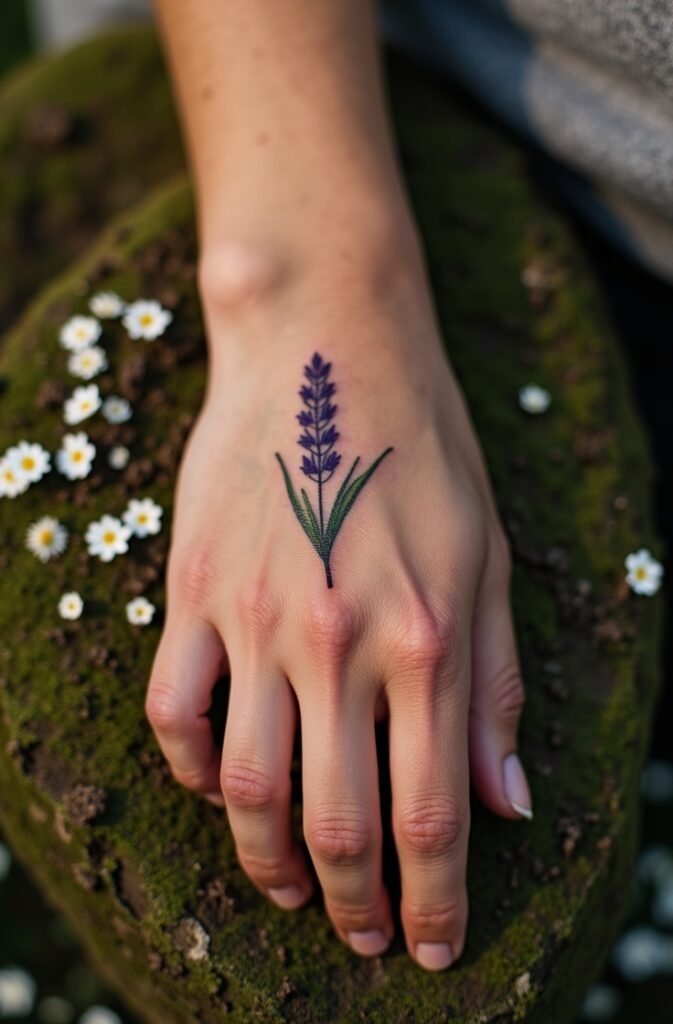
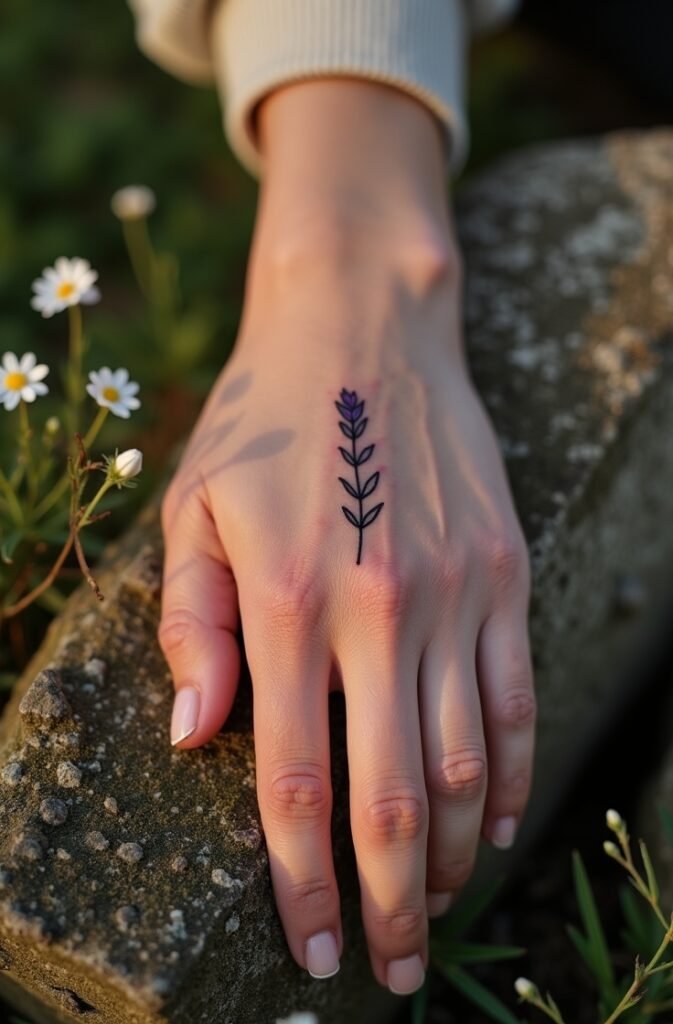
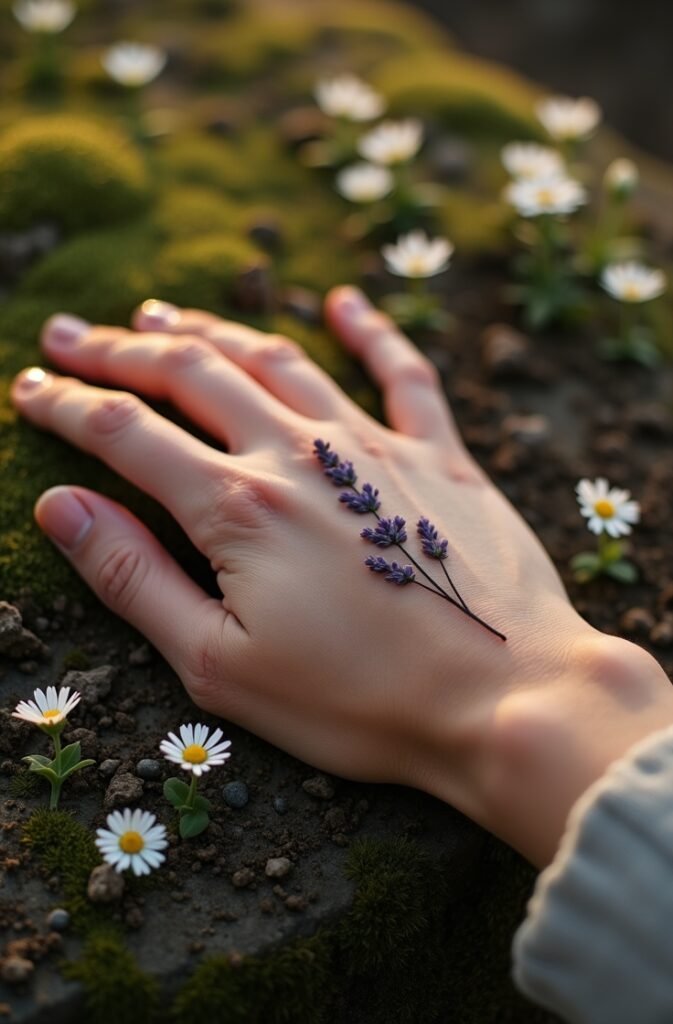
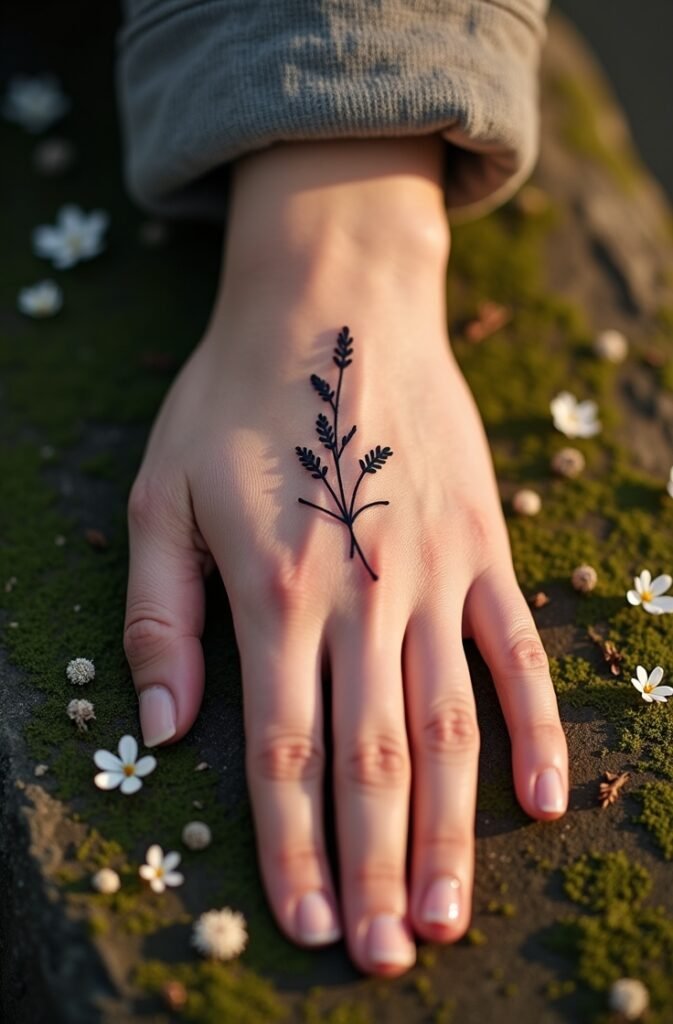
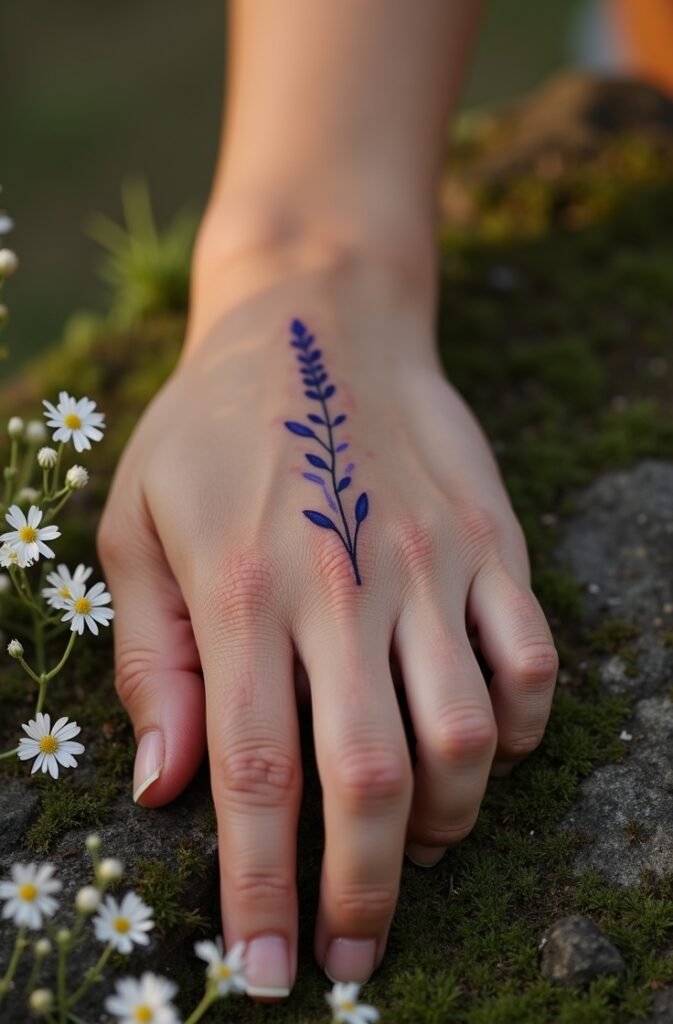
Environmental activists sometimes choose lavender tattoos to express their commitment to protecting natural spaces. The flower symbolizes the fragile beauty that development and pollution threaten to destroy. It’s a call to preserve the simple pleasures that nature provides.
Minimalists appreciate lavender tattoos for their understated elegance. Unlike complex designs that demand attention, these tattoos blend seamlessly into the wearer’s overall aesthetic while maintaining deep personal significance.
Choosing Your Lavender Tattoo Design
The beauty of lavender tattoos lies in their versatility. Single sprigs work beautifully for minimalist designs, while elaborate bouquets can incorporate multiple meanings into one piece. Watercolor techniques can capture the dreamy quality of lavender fields, while fine line work emphasizes the delicate structure of individual flowers.
Placement considerations often depend on the intended meaning. Heart area placements emphasize emotional significance, while wrist or ankle locations keep the symbolism visible as daily reminders. Behind-the-ear designs offer subtle sophistication for professional environments.
Color choices extend beyond traditional purple hues. Some artists incorporate blue tones for deeper spiritual meaning, while others add green stems and leaves for fuller natural representation. Black and grey lavender tattoos possess timeless elegance that ages gracefully over time.
Working with experienced tattoo artists familiar with botanical designs ensures accurate proportions and realistic shading. The delicate nature of lavender flowers requires skillful technique to capture their ethereal quality in permanent ink.
Cultural Significance Across Different Societies
Mediterranean cultures have long revered lavender for its practical and spiritual properties. French perfumers elevated lavender to luxury status, while English gardens showcased its ornamental beauty. These cultural associations add richness to lavender tattoo meanings for people with heritage connections to these regions.
Modern spa culture has globalized lavender’s association with relaxation and self-care. This contemporary meaning appeals to busy professionals seeking balance in their hectic lives. The tattoo becomes a commitment to prioritizing mental health and personal wellness.
Religious traditions have varying interpretations of lavender symbolism. Some Christian denominations associate purple flowers with Easter and resurrection themes, while pagan traditions connect lavender to goddess worship and feminine divine energy. Understanding these cultural layers adds depth to personal tattoo meanings.
The Psychology Behind Lavender Tattoo Choices
Color psychology suggests that purple tones promote creativity, spirituality, and emotional balance. People drawn to lavender tattoos often possess sensitive, artistic natures that value harmony over conflict. They tend to be introspective individuals who process emotions deeply.
The choice to permanently ink a symbol of peace suggests a person’s commitment to maintaining calm energy regardless of external circumstances. It reflects emotional maturity and the recognition that inner peace is a choice rather than a circumstance.
Lavender tattoo wearers frequently report feeling more centered and grounded after getting their designs. While this could be psychological placebo effect, the consistent reports suggest that symbolic tattoos can indeed influence mental states and behavior patterns.
Caring for Your Lavender Tattoo
Proper aftercare ensures that delicate lavender details remain crisp and vibrant over time. The fine lines and subtle shading require gentle healing processes to prevent blur or fade. Following your artist’s specific instructions is crucial for optimal results.
Long-term maintenance includes sun protection to preserve purple pigments, which can fade faster than darker colors. Quality tattoo-specific moisturizers help maintain skin elasticity around detailed floral work. Annual touch-ups may be necessary to keep intricate details sharp.
The aging process affects all tattoos differently, but lavender designs tend to soften gracefully over time. The natural fading can actually enhance the dreamy, watercolor effect that many people desire in their floral tattoos.
Lavender tattoos offer a unique combination of visual beauty and profound symbolism that speaks to fundamental human experiences. Whether representing personal growth, spiritual devotion, or simply an appreciation for nature’s simple pleasures, these purple blooms carry meanings that resonate across cultures and generations.
The decision to permanently mark your body with lavender imagery reflects a deep connection to the values and emotions these flowers represent. In a world that often feels chaotic and overwhelming, lavender tattoos serve as gentle reminders of the peace, beauty, and meaning available in every moment.
As tattoo art continues evolving, lavender designs will likely remain popular for their timeless appeal and universal symbolism. They represent the human desire for tranquility, growth, and connection – themes that transcend temporary trends and speak to eternal truths about the human experience.

Lex memn is a passionate tattoo artist and writer with 3 years of experience in the tattoo world. Dedicated to inspiring and guiding people through creative designs and meaningful tattoo ideas, Lex memn shares their expertise with readers. Explore their work and passion for ink at TifoMags!

